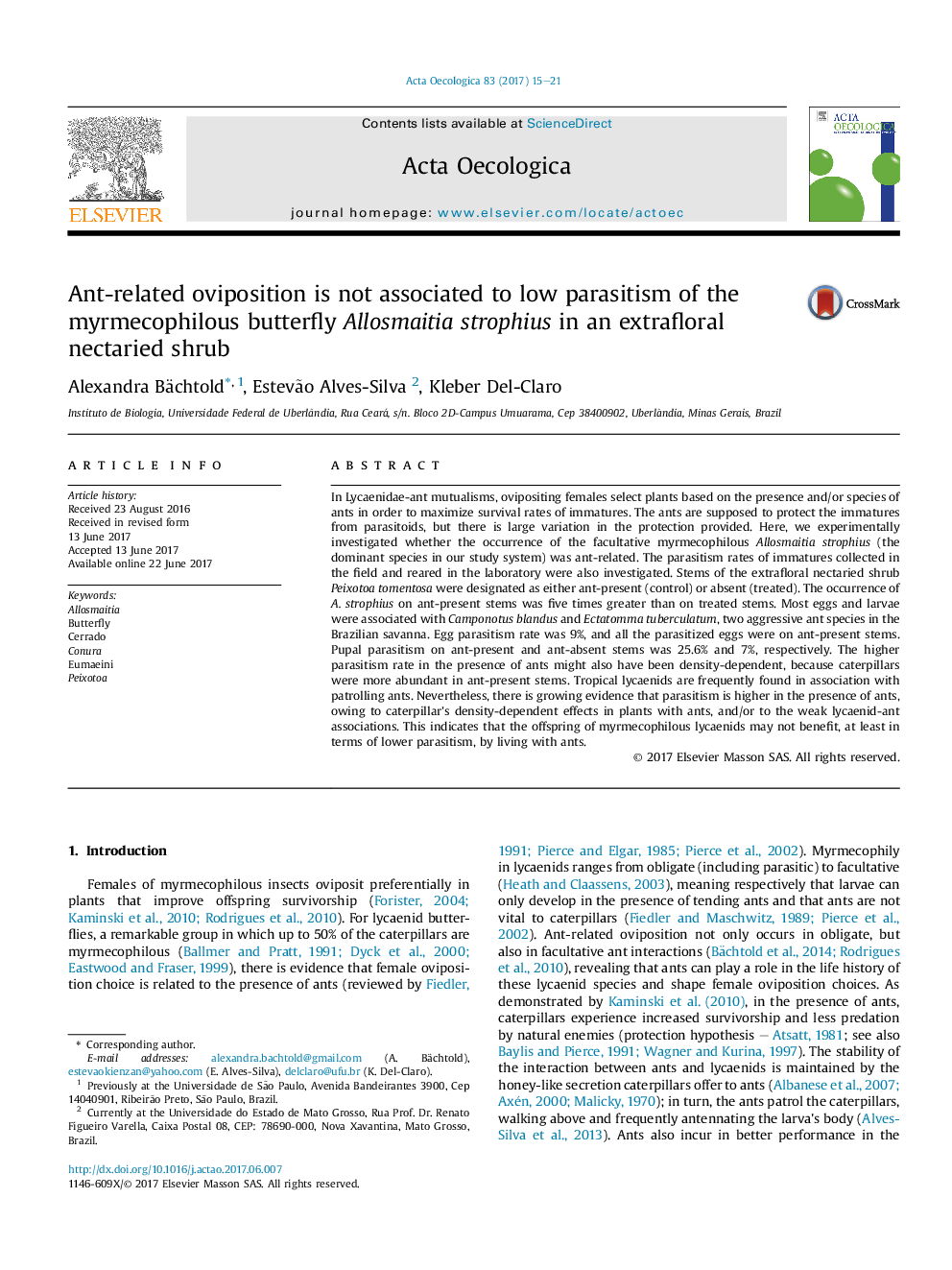| کد مقاله | کد نشریه | سال انتشار | مقاله انگلیسی | نسخه تمام متن |
|---|---|---|---|---|
| 5742460 | 1617689 | 2017 | 7 صفحه PDF | دانلود رایگان |

- Myrmecophilous lycaenid larvae co-occur with tending ants.
- Mutualistic ants are expected to protect lycaenid caterpillars from parasitoids.
- Females of Allosmaitia strophius use ants as cue to oviposition.
- Nonetheless, parasitism of lycaenids was not affected by ant presence.
In Lycaenidae-ant mutualisms, ovipositing females select plants based on the presence and/or species of ants in order to maximize survival rates of immatures. The ants are supposed to protect the immatures from parasitoids, but there is large variation in the protection provided. Here, we experimentally investigated whether the occurrence of the facultative myrmecophilous Allosmaitia strophius (the dominant species in our study system) was ant-related. The parasitism rates of immatures collected in the field and reared in the laboratory were also investigated. Stems of the extrafloral nectaried shrub Peixotoa tomentosa were designated as either ant-present (control) or absent (treated). The occurrence of A. strophius on ant-present stems was five times greater than on treated stems. Most eggs and larvae were associated with Camponotus blandus and Ectatomma tuberculatum, two aggressive ant species in the Brazilian savanna. Egg parasitism rate was 9%, and all the parasitized eggs were on ant-present stems. Pupal parasitism on ant-present and ant-absent stems was 25.6% and 7%, respectively. The higher parasitism rate in the presence of ants might also have been density-dependent, because caterpillars were more abundant in ant-present stems. Tropical lycaenids are frequently found in association with patrolling ants. Nevertheless, there is growing evidence that parasitism is higher in the presence of ants, owing to caterpillar's density-dependent effects in plants with ants, and/or to the weak lycaenid-ant associations. This indicates that the offspring of myrmecophilous lycaenids may not benefit, at least in terms of lower parasitism, by living with ants.
Journal: Acta Oecologica - Volume 83, August 2017, Pages 15-21